
views
Moving the Start Button Back to the Left

Right-click an empty area of the taskbar. Clicking the right mouse button on either side of the icons on your taskbar will bring up a one-item menu.
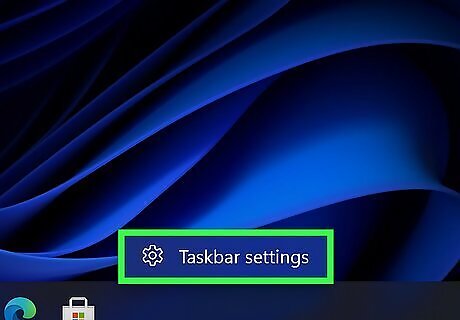
Click Taskbar settings. This menu option appears just over the area you right-clicked. Now you'll see several options for customizing your taskbar.
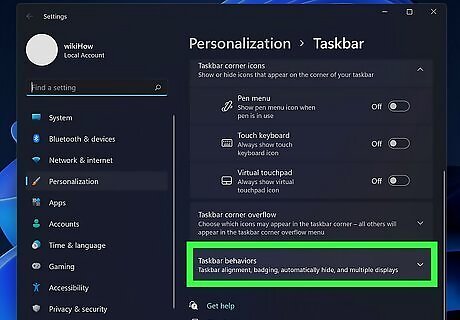
Click Taskbar behaviors. It's the last option.
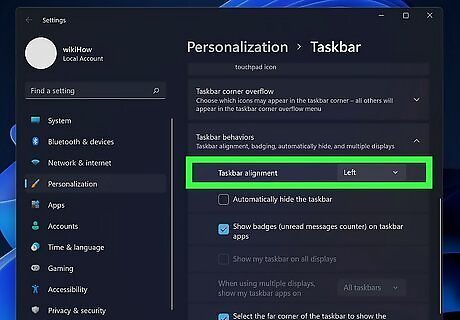
Select Left from the "Taskbar alignment" menu. You'll find this in the drop-down menu at the upper-right corner of the "Taskbar behaviors" area. The Start menu icon and all other pinned icons will automatically move back to the left side of the taskbar.
Customizing the Windows 11 Taskbar
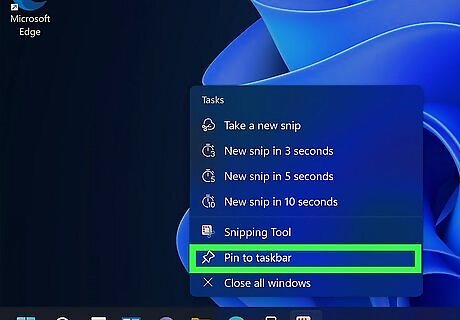
Pin an app to the taskbar. While you can't configure your Windows 11 taskbar and Start menu to look exactly as it did on Windows 10, there are still plenty of customization options. One option is to pin icons for your favorite apps to the taskbar. Here's how: Open the app you want to pin to the taskbar by clicking its icon in the Start menu. When the app is open, its icon will appear on the taskbar. Right-click the app's icon on the taskbar and select Pin to taskbar. To remove an icon from the taskbar, right-click the icon and select Unpin from taskbar. There is no limit to the number of apps you can pin to the taskbar.

Right-click a blank area of the taskbar. Right-clicking any of the blank space on the taskbar will bring up a "Taskbar settings" option.

Click Taskbar settings. This option is just above your mouse cursor.

Toggle taskbar icons on and off. By default, Windows 11 displays icons for Search, Task View, Widgets, and Microsoft Teams Chat on the taskbar. To remove any of these icons from the taskbar, just click its corresponding switch to turn it to the Off (gray) position.
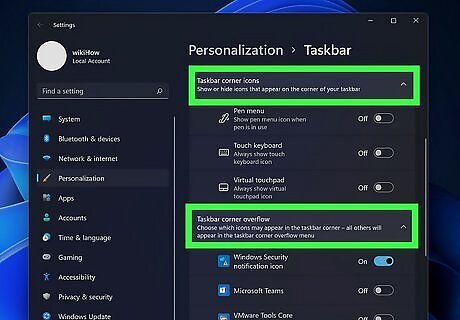
Choose which icons appear in the taskbar corner. Formerly referred to as the "system tray," the taskbar corner is where you'll find the clock, date, and notifications. You can control which icons always display in this area, and which ones hide automatically. Click the Taskbar corner icons menu. If you want an icon to always remain visible in the taskbar corner, toggle its switch to the On position. To hide an item from the taskbar corner, toggle its switch to the Off position. Click the Taskbar corner overflow menu. Choose which icons are always visible on the taskbar corner, and which ones will appear in the overflow menu. To get to the icons in the overflow menu, just click the up-arrow to the left of the clock on the taskbar.
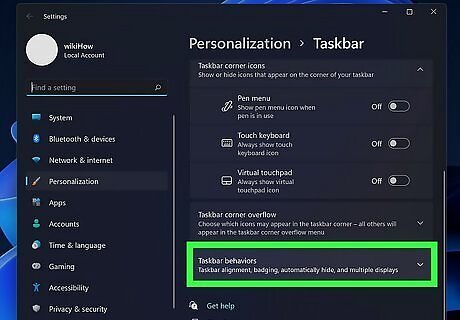
Click the Taskbar behaviors menu. It's toward the bottom of the window. This is where you can control how the taskbar behaves.
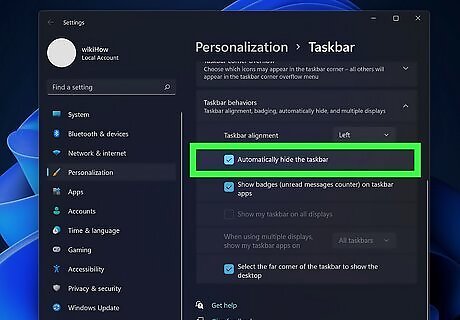
Choose whether to hide the taskbar automatically. If you don't want the taskbar and Start menu to always be visible at the bottom of the screen, check the box next to "Automatically hide the taskbar" to hide it from the screen. You can still bring the taskbar back into view by hovering your mouse cursor over the bottom of the screen.
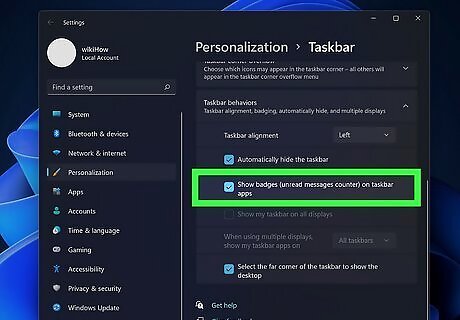
Show unread message counters (badges) on icons. If you want to see a small badge that displays the number of unread messages or notifications for that app, check the box next to "Show badges."


















Comments
0 comment